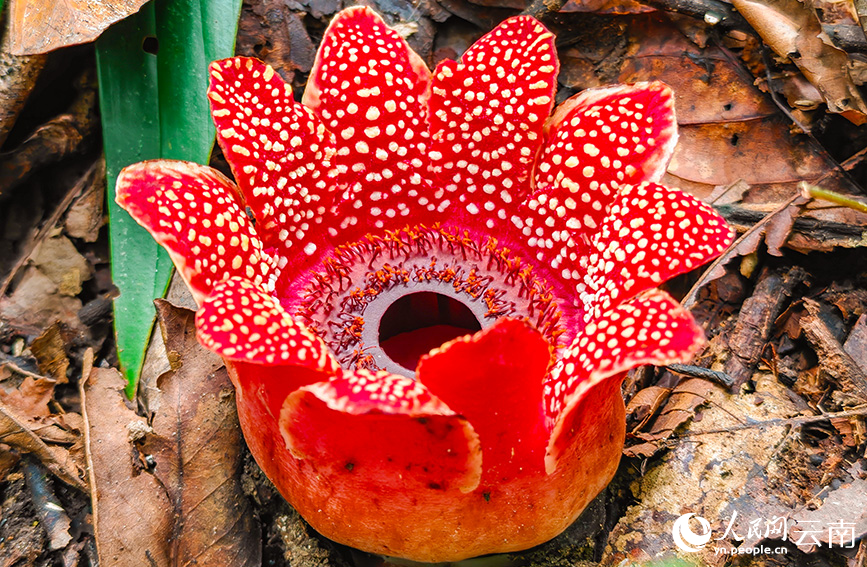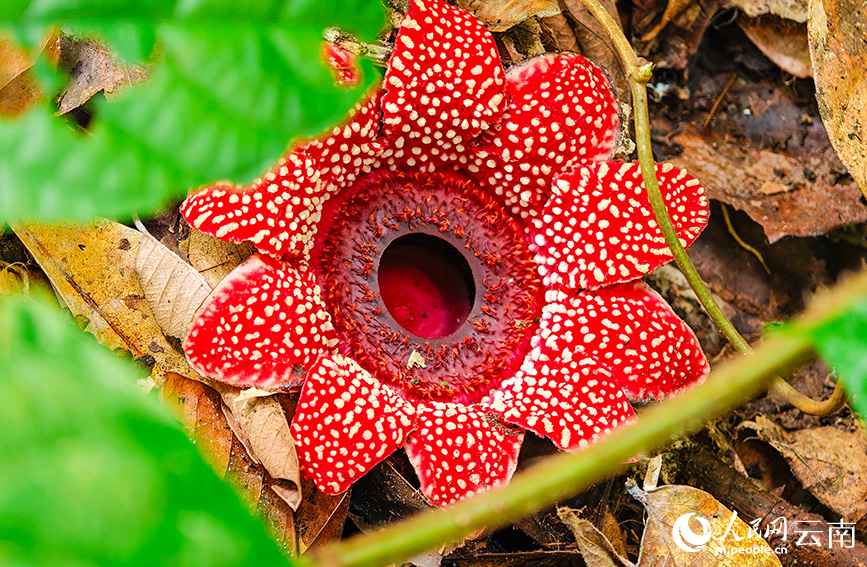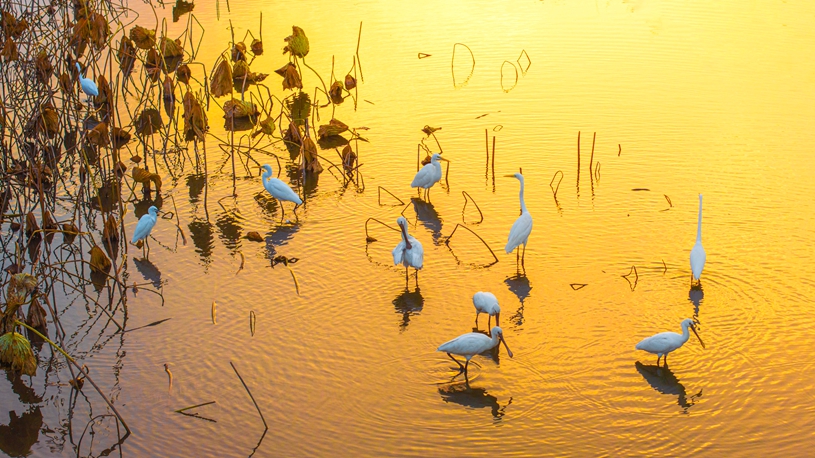Rare parasitic flowering plant rediscovered on Jingmai Mountain, SW China's Yunnan

Photo shows a blooming Sapria himalayana, a rare holoparasitic flowering plant, on Jingmai Mountain, Lancang county, Pu'er city, southwest China's Yunnan Province. (Photo/Luo Zongqiang)
Sapria himalayana, a rare holoparasitic flowering plant that had been considered extinct in China for nearly three decades, was recently rediscovered by a photography enthusiast on Jingmai Mountain, Lancang county, Pu'er city, southwest China's Yunnan Province.
Staff from the county's forestry and grassland bureau later confirmed the species as Sapria himalayana.
As one of the typical plants found in tropical rainforests in Southeast Asia, the species has been spotted in rainforests across Xishuangbanna in recent years.
The plant spends most of its life underground, making it very difficult to find. Only when it accumulates enough nutrients to meet reproductive conditions does it emerge from the soil and bloom with large, spectacular flowers. Its flowering period mainly occurs from October to December each year.
The parasitic flower is classified as vulnerable on both the China Species Red List and the International Union for Conservation of Nature Red List of Threatened Species. It is also designated as a second-class protected plant in China.

Photo shows a blooming Sapria himalayana, a rare holoparasitic flowering plant, on Jingmai Mountain, Lancang county, Pu'er city, southwest China's Yunnan Province. (Photo/Luo Zongqiang)

Photo shows a blooming Sapria himalayana, a rare holoparasitic flowering plant, on Jingmai Mountain, Lancang county, Pu'er city, southwest China's Yunnan Province. (Photo/Luo Zongqiang)

Photo shows a blooming Sapria himalayana, a rare holoparasitic flowering plant, on Jingmai Mountain, Lancang county, Pu'er city, southwest China's Yunnan Province. (Photo/Luo Zongqiang)

A Sapria himalayana, a rare holoparasitic flowering plant, emerges from underground, waiting to bloom on Jingmai Mountain, Lancang county, Pu'er city, southwest China's Yunnan Province. (Photo/Luo Zongqiang)

A Sapria himalayana, a rare holoparasitic flowering plant, emerges from underground, waiting to bloom on Jingmai Mountain, Lancang county, Pu'er city, southwest China's Yunnan Province. (Photo/Luo Zongqiang)

Several Sapria himalayana, a rare holoparasitic flowering plant, emerge from underground, waiting to bloom on Jingmai Mountain, Lancang county, Pu'er city, southwest China's Yunnan Province. (Photo/Luo Zongqiang)

A Sapria himalayana, a rare holoparasitic flowering plant, emerges from underground on Jingmai Mountain, Lancang county, Pu'er city, southwest China's Yunnan Province. (Photo/Luo Zongqiang)

Photo shows several Sapria himalayana, a rare holoparasitic flowering plant, on Jingmai Mountain, Lancang county, Pu'er city, southwest China's Yunnan Province. (Photo/Luo Zongqiang)
Photos
Related Stories
- Feature: China, Uzbekistan jointly safeguard global Allium diversity
- SW China's Yunnan nurtures a wealth of rare alpine plants
- Rare wild plant species reappears in China's Heilongjiang after 3 decades
- Chinese researchers reintroduce critically endangered plant into wild
- Study finds tree trunk breathing adaptation cools climate predictions
- New species of Celastraceae discovered in Chengdu City, China's Sichuan
- Endangered plant rebounds under professional protection in south China's Hainan
- Study reveals impact of plant phenology changes on Qinghai-Tibet Plateau
- Scientists confirm ability of plant leaves to absorb, accumulate airborne microplastics
- Chinese scientists decode genetic variations in tea plants
Copyright © 2025 People's Daily Online. All Rights Reserved.









